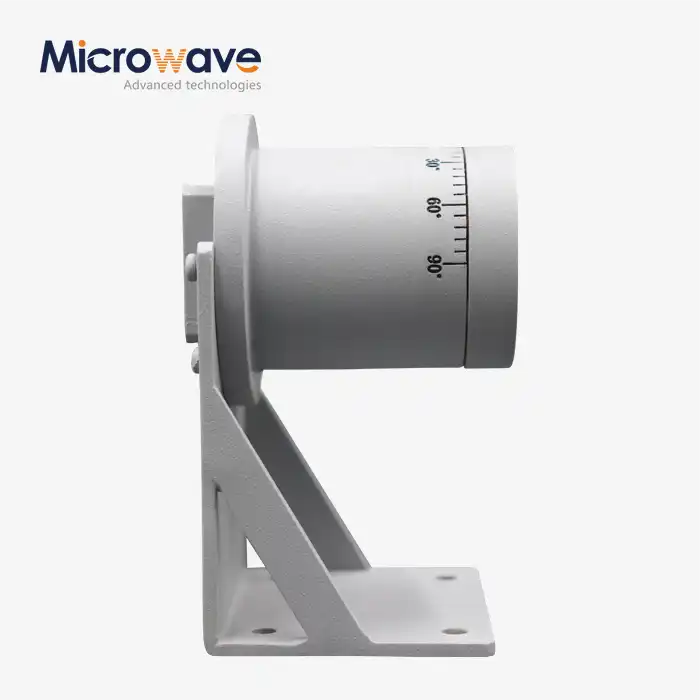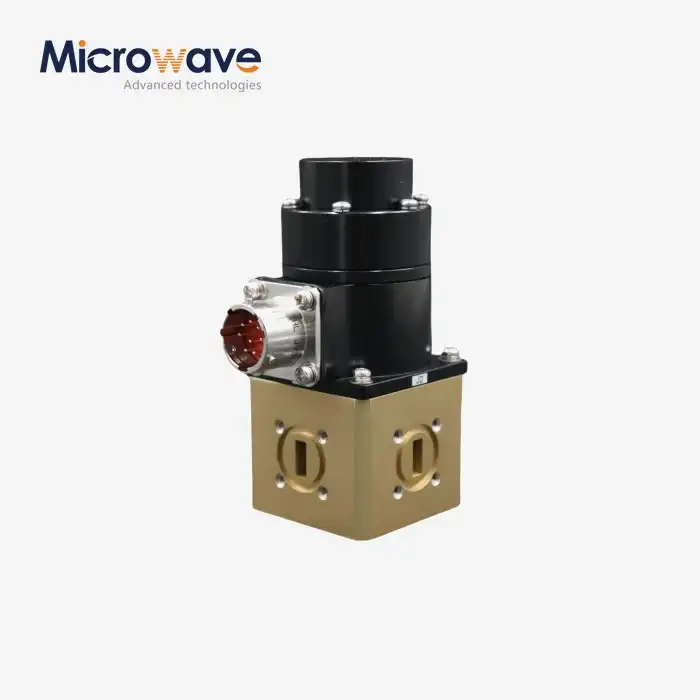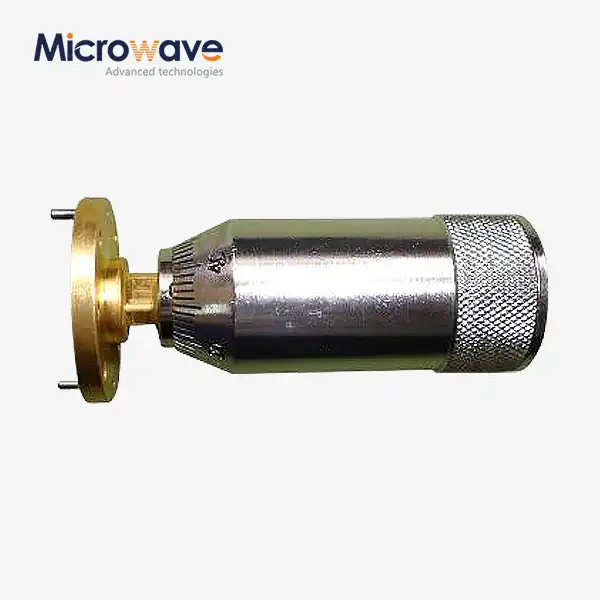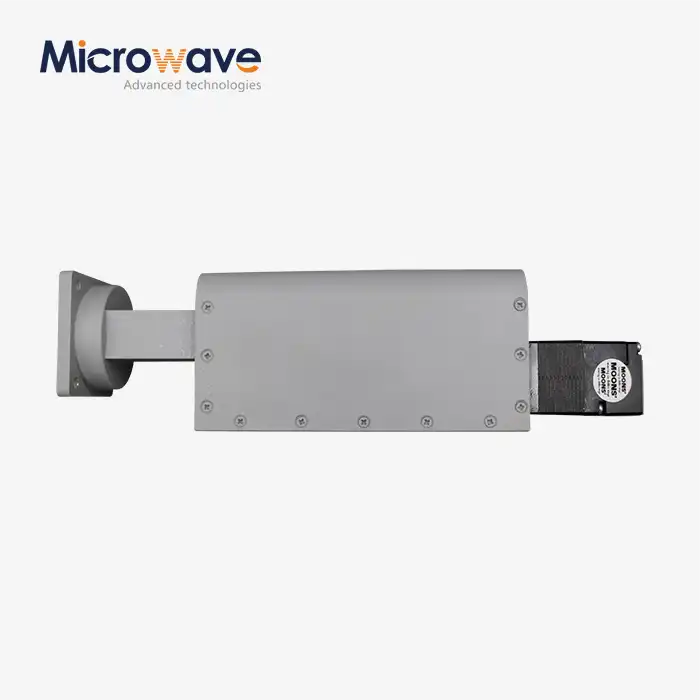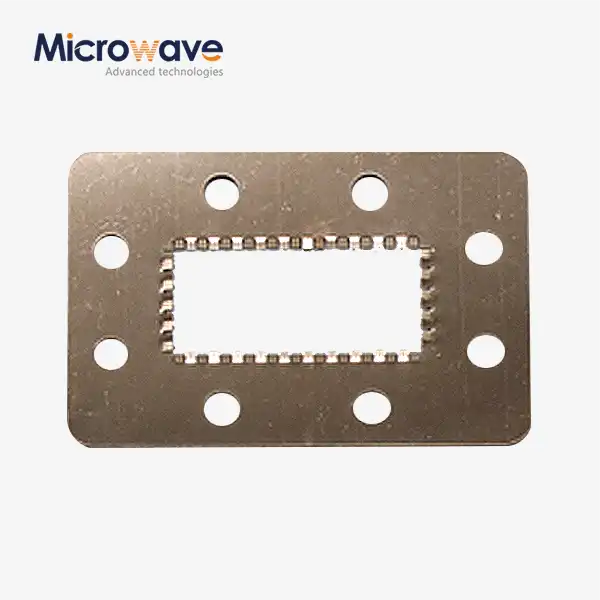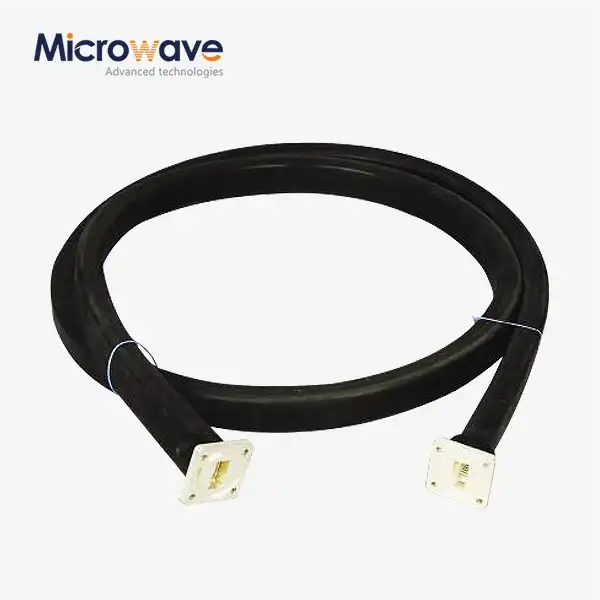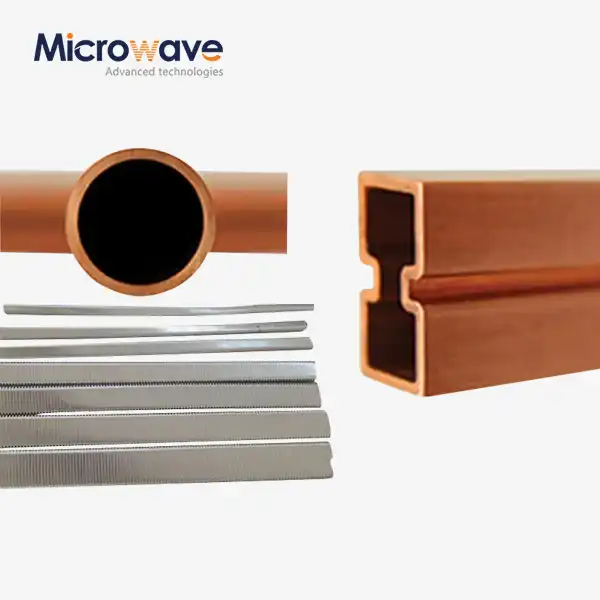How does the waveguide offset short function to achieve signal reflection?
Waveguide offset shorts are critical components in microwave transmission systems that fulfill the essential function of signal reflection with remarkable efficiency. These specialized elements create a deliberate impedance mismatch that forces electromagnetic energy to reflect back through the waveguide path rather than continuing forward. The Waveguide Offset Short achieves this by implementing a precisely positioned metallic plate that closes the waveguide at a calculated offset distance from the connection point. This strategic positioning creates constructive interference patterns that optimize reflection performance across specific frequency bands while minimizing energy loss. By leveraging fundamental electromagnetic principles, these components deliver the exceptional VSWR ratings of 60:1 minimum required for critical applications in telecommunications, radar systems, and satellite communications.
The Electromagnetic Principles Behind Waveguide Offset Short Reflection
Standing Wave Formation in Waveguides
The Waveguide Offset Short operates on the principle of standing wave formation, which occurs when incident waves interact with reflected waves in a confined space. When electromagnetic waves travel through a waveguide and encounter a short circuit termination like the Waveguide Offset Short, the incident and reflected waves combine to form standing waves with fixed positions of maximum and minimum field intensity. This phenomenon is crucial for the proper functioning of many microwave systems. The Waveguide Offset Short creates a near-perfect reflection plane that ensures almost all energy is reflected back with minimal absorption losses. The standing wave pattern established by this reflection is characterized by voltage nodes (zero points) at the short circuit and voltage antinodes (maximum points) at quarter-wavelength intervals from the short. Engineers at Advanced Microwave Technologies Co., Ltd leverage this predictable behavior when designing waveguide systems operating across frequencies from 1.72 GHz to 110 GHz. By precisely controlling the position and geometry of the offset short, our engineers can tune the standing wave patterns to achieve optimal system performance for specific applications, whether in telecommunications infrastructure, defense radar systems, or satellite communication ground stations. The careful consideration of standing wave formation represents just one aspect of the sophisticated electromagnetic design principles incorporated into each Waveguide Offset Short we manufacture.
Impedance Transformation Effects
The Waveguide Offset Short creates a powerful impedance transformation effect that is fundamental to its reflection capabilities. When electromagnetic waves encounter regions of different impedance, partial reflection occurs at the boundary. The Waveguide Offset Short presents an extreme case—a theoretically infinite impedance contrast that causes nearly complete reflection of the incident signal. This impedance transformation effect can be mathematically described by transmission line theory, where the reflection coefficient approaches unity (complete reflection) as the load impedance approaches infinity or zero compared to the characteristic impedance of the waveguide. Advanced Microwave Technologies' Waveguide Offset Short products are engineered to approach this theoretical ideal across their specified frequency bands. The offset nature of these components introduces a phase shift in the reflected signal that can be precisely controlled by adjusting the offset distance. This phase control capability makes the Waveguide Offset Short particularly valuable in applications requiring specific phase relationships, such as in power combining networks or phase-sensitive measurement systems. Our products support frequency ranges from 1.72 GHz to 110 GHz across 18 waveguide bands, with customizable offset dimensions to achieve the exact impedance transformation and phase shift required for specific applications. This flexibility allows system designers to optimize circuit performance by placing reflections exactly where needed with predictable phase characteristics.
Phase Manipulation and Control
The Waveguide Offset Short provides exceptional capabilities for phase manipulation and control in microwave systems, representing one of its most valuable functions. By precisely positioning the reflecting surface at a specific offset distance from the reference plane, engineers can control the phase of the reflected signal with extraordinary precision. This phase manipulation is critical in applications such as impedance matching networks, resonant cavities, and phased array systems. The offset distance creates a controlled electrical path length that determines the phase shift between incident and reflected waves. Advanced Microwave Technologies Co., Ltd manufactures Waveguide Offset Short components with precise dimensional tolerances to ensure consistent phase performance across production batches. Available in waveguide sizes from WR-10 to WR-430 and with options for UG square/round cover and CPR-style flanges, our products provide system designers with standardized solutions that deliver predictable phase characteristics. The 60:1 minimum VSWR specification ensures that reflection amplitude remains consistently high across the operating band, making phase manipulation more reliable. This phase control capability can be leveraged in numerous applications, from creating specific impedance conditions at selected points in a transmission line to establishing resonant conditions in filter circuits. The precision engineering of our Waveguide Offset Short products ensures that these phase relationships remain stable across environmental conditions and over time, contributing to system reliability in mission-critical applications.

Design Considerations for Waveguide Offset Short Implementation
Material Selection and Performance Impact
The choice of material for a Waveguide Offset Short significantly influences its electrical performance, mechanical durability, and thermal stability. Advanced Microwave Technologies Co., Ltd carefully selects materials based on specific application requirements and operating conditions. For standard commercial applications, aluminum alloys provide an excellent balance of conductivity, weight, and cost-effectiveness. These alloys offer sufficient electrical performance while remaining lightweight and economical. For more demanding applications where maximum performance is critical, copper and copper alloys are preferred due to their superior electrical conductivity, which minimizes insertion loss and improves reflection efficiency. In aerospace and defense applications where environmental durability is paramount, we often utilize stainless steel or brass with specialized plating to enhance conductivity while maintaining structural integrity under harsh conditions. The plating process itself—typically using silver, gold, or specialized alloys—adds another dimension to material performance. Our Waveguide Offset Short components feature precisely controlled plating thickness to ensure optimal skin-depth performance across the specified frequency range from 1.72 GHz to 110 GHz. For particularly challenging environments, we can implement special surface treatments that maintain conductivity while improving corrosion resistance. The material selection process considers not only electrical performance but also thermal expansion characteristics, which is critical for maintaining dimensional stability and electrical performance across wide temperature ranges. This is particularly important in aerospace and satellite applications where components may experience extreme thermal cycling. Our ISO:9001:2008 certified manufacturing processes ensure that material selection, preparation, and finishing maintain consistent quality across production batches, delivering the 60:1 minimum VSWR performance our customers expect from every Waveguide Offset Short component.
Dimensional Precision and Tolerance Management
The exceptional performance of a Waveguide Offset Short fundamentally depends on dimensional precision and meticulous tolerance management during manufacturing. At Advanced Microwave Technologies Co., Ltd, we maintain stringent control over critical dimensions with tolerances typically held to within ±0.0005 inches (approximately 12.7 micrometers) for high-frequency applications. This level of precision is essential because even minor dimensional variations can significantly alter the electrical performance of the component, particularly at higher frequencies in the millimeter-wave region. The most critical dimension in a Waveguide Offset Short is the precise positioning of the reflecting surface relative to the reference plane, as this directly determines the phase characteristics of the reflected signal. Our manufacturing processes employ advanced CNC machining centers with regular calibration verification to ensure dimensional stability across production runs. For waveguide components operating at frequencies above 40 GHz, we implement additional verification steps using high-precision coordinate measuring machines that can detect dimensional variations as small as 2 micrometers. The internal surface finish of the Waveguide Offset Short requires equally careful attention, as surface roughness directly impacts insertion loss and reflection efficiency. Our manufacturing processes achieve surface finishes typically better than 32 microinches Ra (roughness average), with specialized polishing techniques applied for components operating at the highest end of our frequency range from 75 GHz to 110 GHz. Temperature stability during manufacturing and measurement is another critical aspect of dimensional control. Our production facilities maintain temperature-controlled environments, and components undergo thermal cycling and stabilization before final inspection to ensure dimensional stability in field operation. With waveguide sizes ranging from WR-10 to WR-430, each product category has specific tolerance requirements scaled appropriately to the operating wavelength, ensuring consistent electrical performance across our entire product line.
Integration Considerations for System Design
Integrating a Waveguide Offset Short into complex microwave systems requires careful consideration of mechanical, electrical, and thermal factors to achieve optimal performance. From a mechanical perspective, proper flange alignment is critical to prevent signal leakage and unexpected reflections at the connection points. Advanced Microwave Technologies Co., Ltd offers both UG square/round cover and CPR-style flanges to accommodate different system requirements and ensure compatibility with existing infrastructure. The mounting hardware and torque specifications must be carefully followed to maintain proper contact without distorting the waveguide structure, which could alter the electrical characteristics of the transmission path. From an electrical standpoint, system designers must account for the precise reflection phase introduced by the Waveguide Offset Short when calculating overall system performance. Our technical documentation provides detailed phase information across the supported frequency ranges from 1.72 GHz to 110 GHz to facilitate accurate system modeling. The high VSWR specification of 60:1 minimum ensures predictable reflection characteristics that can be reliably incorporated into system designs. Thermal management represents another critical integration consideration, particularly in high-power applications where thermal expansion could affect dimensional stability. Our engineering team can provide guidance on appropriate cooling methods and mounting configurations to maintain performance under varying power loads. For systems operating in environments with significant temperature variations, we offer custom-designed Waveguide Offset Short components with compensated mechanical structures to maintain electrical performance across the specified temperature range. Integration into complex systems often involves interaction with other components such as tuners, filters, and amplifiers. Our application engineers can assist with system-level analysis to predict and mitigate potential interactions that might affect overall performance. With over 20 years of experience in microwave product development, Advanced Microwave Technologies Co., Ltd provides comprehensive technical support to ensure successful integration of our Waveguide Offset Short components into even the most complex microwave systems.

Applications and Performance Optimization
Microwave Measurement and Calibration Systems
The Waveguide Offset Short plays a crucial role in microwave measurement and calibration systems, serving as a primary reference standard for establishing known reflection conditions. In vector network analyzer (VNA) calibration procedures, the Waveguide Offset Short provides a precisely defined reflection coefficient with magnitude approaching unity and phase that can be accurately calculated based on its physical dimensions. This makes it an essential element in calibration kits used to characterize transmission lines, components, and systems across frequency ranges from 1.72 GHz to 110 GHz. Advanced Microwave Technologies Co., Ltd manufactures Waveguide Offset Short components with exceptional dimensional stability and surface finish to ensure measurement repeatability and accuracy. Our calibration-grade components undergo additional verification processes, including cross-comparison with traceable standards, to certify their performance for metrology applications. In measurement systems, the Waveguide Offset Short frequently serves as part of sliding load assemblies used to characterize impedance variations along transmission lines. The precisely defined reflection characteristics provided by these components, with VSWR specifications of 60:1 minimum, allow engineers to isolate and quantify performance issues in complex microwave systems. Beyond standard calibration applications, our Waveguide Offset Short components are used in specialized measurement setups for material characterization, where the known reflection properties serve as reference conditions for determining the electromagnetic properties of test materials. The availability of components in 18 different waveguide bands, from WR-10 to WR-430, ensures compatibility with measurement systems across the entire microwave and millimeter-wave spectrum. Our ISO:9001:2008 certified manufacturing processes ensure that each Waveguide Offset Short meets stringent performance specifications, providing the reliability and repeatability essential for precision measurement applications. For customers with specialized measurement requirements, our engineering team can design custom Waveguide Offset Short configurations optimized for specific frequency bands or measurement scenarios.
Radar and Communication System Applications
The Waveguide Offset Short serves as a critical component in advanced radar and communication systems, where precise signal management and reflection characteristics directly impact system performance. In radar applications, these components are frequently employed in the transmit/receive modules of phased array systems, where they help establish controlled impedance conditions necessary for optimal power transfer and signal integrity. Military and aerospace radar systems particularly benefit from the high performance and reliability of Advanced Microwave Technologies' Waveguide Offset Short products, which are engineered to maintain consistent electrical characteristics in demanding environmental conditions. The 60:1 minimum VSWR specification ensures strong, predictable reflections that enable precise system calibration and performance verification. In satellite communication systems, Waveguide Offset Short components play an essential role in reference signal generation, impedance matching networks, and harmonic control circuits. Ground station equipment for satellite uplinks and downlinks relies on these precision-engineered components to maintain signal quality across the communication chain. Our products support frequencies used in both commercial and military satellite bands, with waveguide sizes from WR-10 to WR-430 covering the full range of common satellite communication frequencies. Advanced radar systems operating in the millimeter-wave region (typically above 30 GHz) present particularly challenging requirements for component performance. Our Waveguide Offset Short products for these applications undergo additional precision machining and verification steps to ensure they meet the demanding specifications of modern automotive radar, security scanning systems, and advanced meteorological radar networks. The RoHS compliance of our products ensures they meet global environmental standards while delivering the exceptional electrical performance required for these sophisticated systems. For customers with specialized radar or communication applications, Advanced Microwave Technologies Co., Ltd offers customized Waveguide Offset Short designs with optimized electrical characteristics for specific frequency bands and system architectures.
Research and Development Applications
The Waveguide Offset Short stands as an indispensable tool in research and development environments where engineers and scientists push the boundaries of microwave technology. In university laboratories and corporate R&D facilities, these components provide reliable reference conditions for investigating novel materials, components, and system architectures. The consistent and predictable reflection characteristics of Advanced Microwave Technologies' Waveguide Offset Short products, with their impressive VSWR specification of 60:1 minimum, create controlled test conditions that isolate specific variables under investigation. This allows researchers to accurately characterize experimental devices without the confounding effects of unknown reflection properties. In emerging 5G and 6G communication research, our Waveguide Offset Short components operating in millimeter-wave bands from 30 GHz to 110 GHz support the development of next-generation beamforming networks, massive MIMO systems, and integrated antenna arrays. Researchers can use these precision components to establish controlled test beds for evaluating innovative circuit topologies and signal processing techniques. Quantum computing research represents another frontier application where Waveguide Offset Short components play a crucial role. These advanced systems often require precisely controlled microwave signals for qubit manipulation, and our high-precision waveguide components provide the signal integrity necessary for these extremely sensitive experiments. With available frequency ranges from 1.72 GHz to 110 GHz across 18 waveguide bands, our products support research across virtually the entire microwave and millimeter-wave spectrum. For research applications requiring non-standard configurations, our engineering team collaborates closely with academic and industry researchers to develop custom Waveguide Offset Short designs tailored to specific experimental requirements. Our prototyping capabilities allow for quick turnaround on experimental components, enabling researchers to iterate rapidly through design concepts. Furthermore, our advanced microwave measurement equipment, capable of characterization up to 110 GHz, helps researchers verify the performance of both our components and their experimental systems, accelerating the development cycle from concept to working prototype.
Conclusion
In summary, the Waveguide Offset Short represents a critical component for achieving precise signal reflection in microwave systems through carefully engineered electromagnetic principles. Its ability to create controlled impedance conditions makes it invaluable across numerous applications from telecommunications to defense systems. Advanced Microwave Technologies Co., Ltd's expertise in manufacturing these components ensures exceptional performance characteristics that meet the most demanding requirements in today's rapidly evolving microwave landscape.
Looking to optimize your microwave system performance with industry-leading waveguide components? Advanced Microwave Technologies Co., Ltd offers unmatched expertise with our 20+ years of experience, comprehensive product range, and dedicated technical support. Our perfect supply chain system ensures timely delivery while our professional R&D team stands ready to develop customized solutions for your unique challenges. Experience the ADM difference with our strict quality control processes and robust after-sales capabilities. Contact our engineering team today at sales@admicrowave.com to discuss how our Waveguide Offset Short solutions can enhance your system's performance and reliability.
References
1. Johnson, R.C. & Jasik, H. (2018). Antenna Engineering Handbook: Waveguide Components and Assemblies. McGraw-Hill, New York.
2. Smith, P.L. & Williams, D.F. (2019). Microwave Transmission Lines and Waveguide Components: Theory and Applications. IEEE Press, Piscataway.
3. Chen, L.F., Ong, C.K., & Varadan, V.V. (2020). Microwave Electronics: Measurement and Materials Characterization. John Wiley & Sons, London.
4. Pozar, D.M. (2022). Microwave Engineering. 5th Edition. Wiley, New York.
5. Collin, R.E. (2021). Foundations for Microwave Engineering. Revised Edition. Wiley-IEEE Press.
6. Balanis, C.A. (2023). Advanced Engineering Electromagnetics. 3rd Edition. Wiley, Hoboken.




